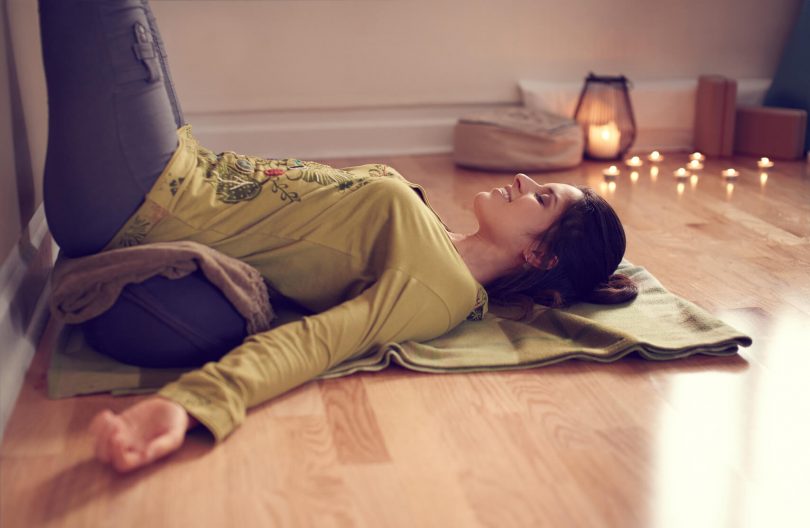If you’re looking for a new type of yoga to try, you’re probably weighing your options pretty carefully. Maybe you’ve made a compare and contrast chart… or maybe you’ve been a bit frazzled by the sheer number of styles, classes, and yoga fusions to choose from.
One way to start narrowing down your options is to consider activity level. Do you want a fast-paced yoga that gets your heart pumping? Do you want a challenging routine to stretch your physical limits and make you sweat? Or, do you want a gentle, relaxing form of yoga that can help you to heal, both inside and out?
If the latter type is what you’re after, consider searching for a restorative yoga class or group session in your area. This type of yoga usually only contains five or six poses. Each pose is held for at least five minutes, allowing you to fully ease into and get the most out of every pose. The poses themselves are gentle and focused on, as the name suggests, restoration, relaxation, and recovery.
Sound like something that may augment your life? Here are seven benefits of restorative yoga to consider.
It can help you to fully relax
Practicing restorative yoga when you’re feeling stressed, tense, angry, or worried can really help you to relax. Even if you’re not feeling particularly bothered, you may be surprised at how much more peaceful a session of restorative yoga can make you feel. Make your session 20 minutes or longer in order to relax most fully.
It can teach you maximum breath control
All types of yoga — and meditation, for that matter — are great for training your breath, but restorative yoga may just take the cake for teaching you to take long, slow, deep breaths. Not only will you get good at breathing slowly and deeply, it will become more natural with time. The ability to stop and take a few deep breaths is highly useful — and sometimes necessary — in many a trying situation.
It can help you to achieve stillness
Because restorative yoga is so closely intertwined with meditation, it can help you to achieve and hone stillness of being within yourself. Some people may find restorative yoga to be more suited for them than meditation, because of the gentle movements involved. If it works for you, embrace it.
It can help loosen those knots and kinks
If you’re sore after a day of sitting in an office chair, traveling around the city in traffic, or for whatever reason, a restorative yoga session can help to gently loosen up all of that tendon and ligament gristle. Doing some restorative yoga to stretch and loosen muscles is ideal, because stretching too vigorously may cause injury.
It can ease muscle tension after you exercise
After exercising is a perfect time to get on the mat for some restorative yoga. As mentioned above, it can loosen sore, stiff muscle knots. It can also help you to cool down after a strenuous workout, and ensure that your muscles get a good, deep, relaxed stretch.
It may greatly improve your sleep
Scheduling a restorative yoga session in the evening before you hit the hay may go far in improving your sleep. Because it gets you so relaxed and peaceful, this may be exactly what you need to de-stress your mind and unwind your body for maximum quality sleep.
It’s a gentle form of yoga perfect for recovery
As mentioned, restorative yoga is extremely slow and gentle, so it’s perfect for people recovering from injuries, strains, and exhaustion. If you are trying to get yourself back to a place of health, restorative yoga could significantly augment your recovery schedule.
Have you ever tried restorative yoga? If so, would you recommend it, and why?
— Meditation Daily







